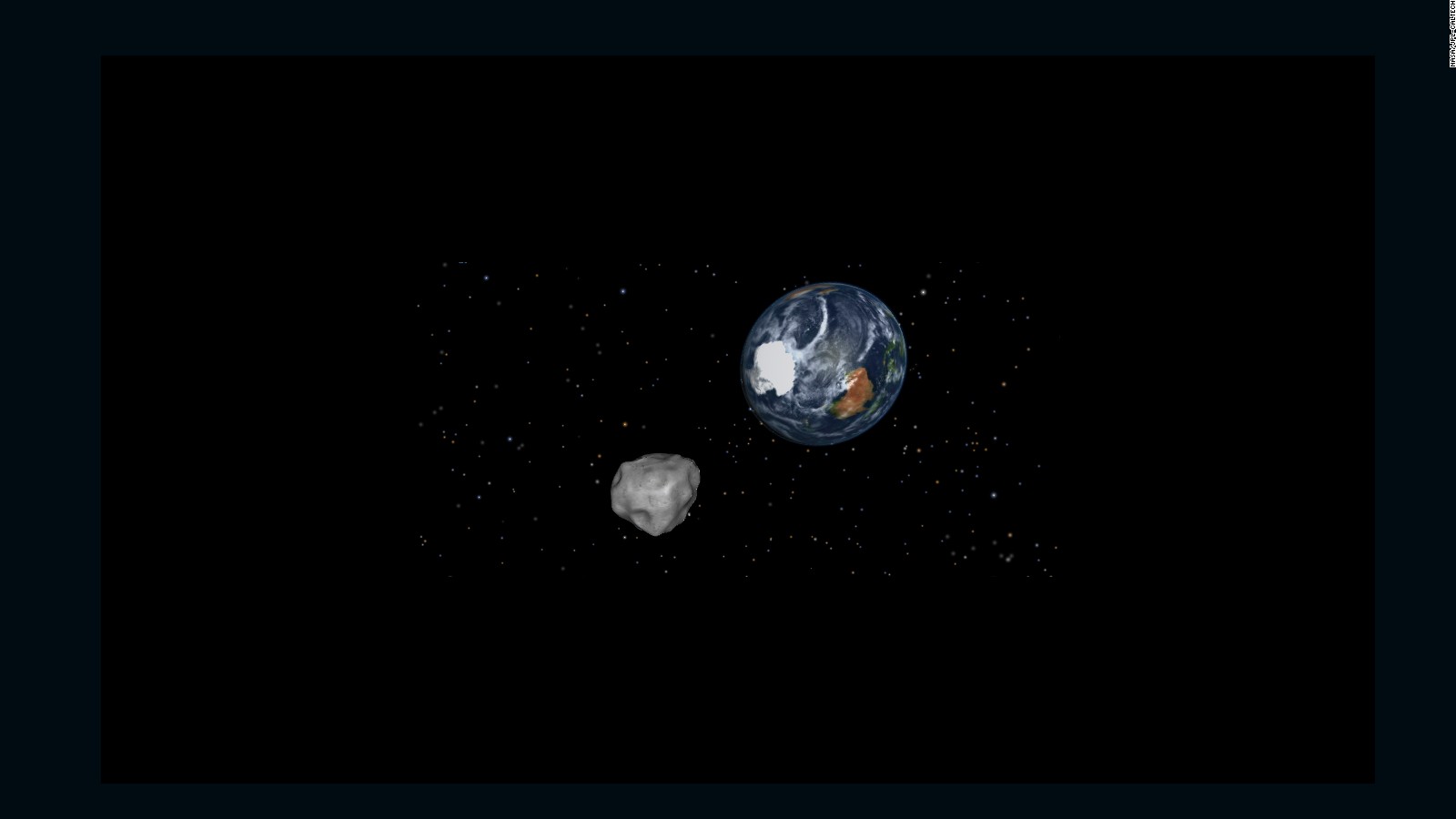

The Goldstone radar observed Apophis March 3–11, 2021, helping to refine the orbit again, and on March 25, 2021, the Jet Propulsion Laboratory announced that Apophis has no chance of impacting Earth in the next 100 years. Observations in 2020 by the Subaru telescope confirmed David Vokrouhlický's 2015 Yarkovsky effect predictions. On average, an asteroid the size of Apophis (370 metres) is expected to impact Earth once in about 80,000 years. Entering March 2021, six asteroids each had a more notable cumulative Palermo Technical Impact Hazard Scale than Apophis, and none of those has a Torino level above 0. On April 12, 2068, the nominal trajectory has Apophis 1.87 AU (280 million km) from Earth. Apophis will make two modestly close approaches to Earth in 2036, but even the planet Venus will come closer to Earth in 2036. By (April 15, 2013, observation arc), the possibility of an impact on Aphad been eliminated altogether. Preliminary observations by Goldstone radar in January 2013 effectively ruled out the possibility of an Earth impact by Apophis in 2036. The diameter of Apophis is estimated to be approximately 370 metres (1,210 ft).

During the short time when it had been of greatest concern, Apophis set the record for highest rating ever on the Torino scale, reaching level 4 on December 27, 2004. By 2008, the keyhole had been determined to be less than 1 km wide. This possibility kept it at Level 1 on the Torino impact hazard scale until August 2006, when the probability that Apophis would pass through the keyhole was determined to be very small and Apophis' rating on the Torino scale was lowered to zero. Until 2006 a small probability nevertheless remained that, during its 2029 close encounter with Earth, Apophis would pass through a gravitational keyhole of no more than about 800 metres ( 1⁄ 2 mi) in diameter, which would have set up a future impact exactly seven years later on April 13, 2036. Additional observations provided improved predictions that eliminated the possibility of an impact on Earth in 2029. "Future measurements of its position can be expected to rule out any possible impacts.99942 Apophis is a near-Earth asteroid and potentially hazardous asteroid with a diameter of 370 metres (1,210 feet) that caused a brief period of concern in December 2004 when initial observations indicated a probability up to 2.7% that it would hit Earth on April 13, 2029. "Current calculations show that Apophis still has a small chance of impacting Earth, less than 1 in 100,000 many decades from now," said Nasa's Dwayne Brown. However rather than being made mostly of rock, a comet contains lots of ice and gas, which can result in amazing tails forming behind them (thanks to the ice and dust vapourising) Comet: Like asteroids, a comet orbits the Sun.Meteorite: If a meteoroid doesn't vapourise completely and survives the trip through Earth's atmosphere, it can land on the Earth.On Earth, it'll look like a streak of light in the sky, because the rock is burning up Meteor: If a meteoroid enters the Earth's atmosphere, it begins to vapourise and then becomes a meteor.

Meteoroid: When two asteroids hit each other, the small chunks that break off are called meteoroids.

Most are found in the asteroid belt (between Mars and Jupiter) but they can be found anywhere (including in a path that can impact Earth)


 0 kommentar(er)
0 kommentar(er)
